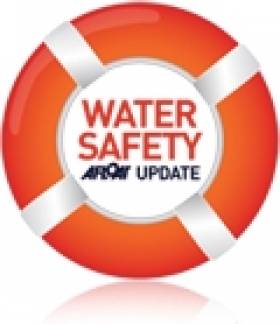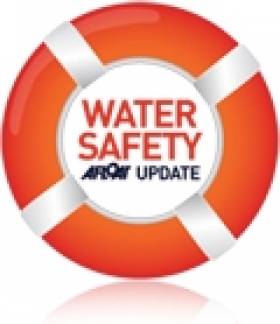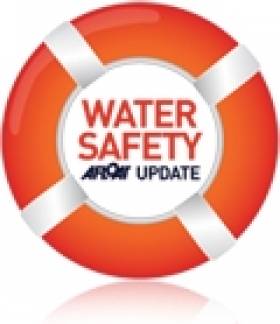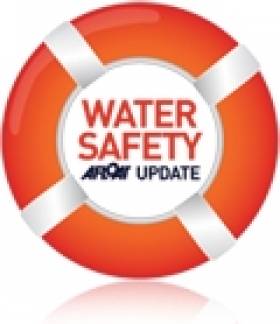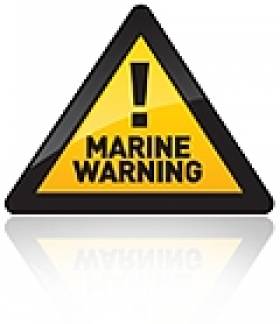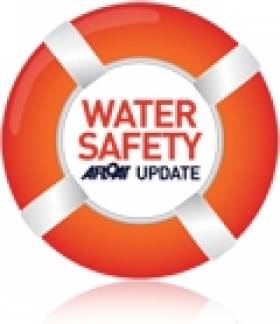Displaying items by tag: water safety
Lock Gate Maintenance, 'Head of River' Race on Shannon Navigation
#InlandWaterways - Waterways Ireland wishes to advise masters and owners on the Shannon Navigation that work will commence on the lock gates at Tarmonbarry Lock next Monday 14 January.
These works will be on-going for a period of approximately eight weeks until Thursday 14 March 2013. An alternative passage maybe accessed via the Camlin river loop upstream of Tarmonbarry Lock and the Clondra Canal downstream of the lock.
The cross-border body for Ireland's inland waterways also advises that the Carrick-on-Shannon Rowing Club's Head of River race will take place on Saturday 23 February from 9am till 5pm.
Masters of vessels are requested to proceed at slow speed and with minimum wash when passing this stretch of the navigation and to heed any advice or instructions issued by the regatta officials.
Meanwhile, Waterways Ireland has published a general marine notice reminding masters and owners of their responsibilities when navigating Ireland's rivers, lakes and canals.
The notice includes information on vessel registration, canal permits, public berthing, smart cards for service payments, speed restrictions, water safety and other important details for anyone boating in Ireland North and South.
RNLI Seeks Responses in Sea Safety Advice Survey
#SAFETY AT SEA - How do you use weather forecasts to plan your leisure time on the water?
The RNLI asks all water users in the UK and Ireland to take a quick 10-minute survey by the UK's Met Office.
Its results will help meteorologists and rescue teams to better understand sea users in order to give better water safety advice and save more lives through preventative action.
Take the survey HERE by 3 December.
Going out on the water can be a lot of fun, and is a way of life in coastal communities around the UK and Ireland. But the sea can be an unpredictable and dangerous place.
Taking some simple precautions can make your time on the water even more enjoyable, and reduce your chances of getting into trouble.
The RNLI has an interactive publication, Sea Safety: The Complete Guide, which is essential reading for anyone who finds themselves drawn to the water.
How To Install a Fire Suppression System On Your Vessel
#SAFETY ON BOARD - Tackling fires on board a vessel is usually a case of grabbing the trusty fire extinguisher. But what if the fire is in the engine compartment, and you don't realise what's happening till it's too late?
The best weapon against fire is prevention, and to this end Sail Magazine presents a guide for how to install a straight-forward automatic fire suppression system on your boat.
Top of the line systems employ automatic sensors which detect when the temperature rises above a certain level and deploys an inert gas to extinguish the flames.
But the system outlined here in step-by-step format takes a simpler approach, involving a cable release that's controlled by a handle next to the helm that can be used to set off an extinguisher in the engine space at the first sign of trouble.
It means that the door to the engine room can remain shut, keeping that important safety barrier between the fire and the rest of the boat while also starving the flames of the oxygen they need to spread.
Sail Magazine has more on the story HERE.
Tourist Dies in Cape Town Charter Boat Capsize
#WATER SAFETY - Irish tourists headed to South Africa have been reminded of the dangers of the sea after a whale-watching vessel capsized near Cape Town at the weekend.
As BBC News reports, British tourist Peter Hyett and crewman John Roberts died when the catamaran Miroshga capsized off Hout Bay on the eastern side of the Cape Peninsula, near the popular seal colony of Duiker Island.
A number of the 39 passengers on board at the time were trapped in the vessel for almost four hours before they were freed by rescuers.
The seas off Hout Bay are a mecca for whale and seal watching, but are known to be rough, with hidden rocks below the surface. Great white sharks are also a regular sight in the waters, attracted by the seals.
But fellow skippers in the area reported fine weather and only slight swells at the time of the capsizing, according to iAfrica.com.
An investigation into the incident is being launched.
Marine Notice: Alcohol and Drugs Onboard Pleasure Craft
#WATER SAFETY - The Department of Transport, Tourism and Sport (DTTAS) has published a Marine Notice addressed to all pleasure and recreational craft owners, masters and users to remind the public of the law in relation to being under the influence of alcohol and/or drugs when operating or being on board a vessel in Irish waters.
The 2010 Annual Report of the Marine Casualty Investigation Board (MCIB) highlighted the dangers inherent in excessive alcohol consumption while on board or operating a vessel and emphasised the relevant legislation under the Pleasure Craft (Personal Flotation Devices and Operation) (Safety) Regulations.
While operating a pleasure craft, being towed or on board any floating vessel, it is against the law to be under the influence of alcohol or drugs or any combination of drugs or of drugs and alcohol to such an extent as to be incapable of having proper control of the craft.
It is also against the law to consume alcohol or drugs in circumstances which could affect the safety of others on board or others using Irish waters, or create a disturbance on board or be a nuisance to others using Irish waters.
It is a requirement for the master or owner of a pleasure craft to take all reasonable steps to ensure that persons comply with the regulations.
The Maritime Safety Act 2005 also contains a range of provisions relating to the prohibition on operating a vessel in Irish waters while under the influence of alcohol or drugs, the breaking of which can lead to fines of up to €5,000 and up to three months' imprisonment.
Full details are outlined in Marine Notice No 56 of 2012, a PDF of which is available to read or download HERE.
Costa Concordia Crew Wins Top Seafarer Award
#CRUISE LINERS - The crew of the Costa Concordia that capsized off the coast of Italy earlier this year have won a prestigious award for their "courage and professionalism" in response to the disaster, as The Irish Times reports.
The Lloyd's List Seafarer of the Year award for 2012 went to the crew of the stricken cruise liner for their actions during the hazardous nighttime evacuation, in which they exhibited "true examples of courage and professionalism".
As previously reported on Afloat.ie, an Irish couple were among the thousands rescued from the ship after it ran around in shallow waters off the western Italian coast on Friday 13 January. At least 32 people were reported killed in the tragedy.
The ship's captain Francesco Schettino has been charged with multiple counts of manslaughter, as well as causing the incident and abandoning ship.
In the wake of the Costa Concordia sinking, cruise passengers will now be given extra safety briefings before leaving port under new mandates drawn up by the cruise industry.
The Irish Times has more on the story HERE.
Marine Notice: Annual Servicing of Lifesaving Equipment
#MARINE NOTICE - The latest Marine Notice from the Department of Transport, Tourism and Sport (DTTAS) reminds vessel owners and all seafarers of the requirement to service their lifejackets, liferafts and other safety equipment.
All items that form part of a vessel's lifesaving appliances, from SOLAS and MED inflatable liferafts to inflated and rigid inflated rescue boats, inflated boats, inflated life jackets (including immersion suits complying with the requirements for lifejackets), hydrostatic release units (HRUs) and marine evacuation systems are required to be serviced at intervals not exceeding 12 months.
Annual servicing of inflatable liferafts, HRUs and marine escape systems must be carried out by an approved liferaft service station which has been formally appointed by the manufacturer of the approved equipment.
The names and contact details of the currently approved liferaft service stations in Ireland and which have been approved by the Minister for Transport, Tourism and Sport are listed in the appendix on Marine Notice No 53 of 2012, a PDF of which is available to read or download HERE.
Annual servicing of inflated lifejackets (including immersion suits complying with the requirements for lifejackets), inflated boats, inflated and rigid inflated rescue boats must be carried out by a service station which has been formally appointed by the manufacturer of the approved equipment.
Emergency repairs to a vessel’s inflated and rigid inflated rescue boats and inflated boats may be carried out on board that vessel, but permanent repairs shall be effected at a service station ashore as soon as practicable. This notice supersedes Marine Notice No 19 of 2010.
Irish Water Safety Warns of Work Related Drownings
Since the start of 2007, there have been 22 work-related fatalities where the victim drowned according to Irish Water Safety.
The Breakdown by sector (excluding those under current investigation):
2 in Agriculture
17 in Fishing
1 in Quarrying
1 in Construction
1 in Freight transportation over water
Portuguese Man-of-Wars Arrive on Irish Shores
#WATER SAFETY - Irish Water Safety is warning members of the public that Portuguese Man-of-Wars have landed on beaches in Waterford and Cork, with reports of sightings in Tramore, Ardmore, Inchydoney and Schull so far – and may land on other shores, particularly Kerry
With another sunny weekend expected, surfers and families enjoying the beach are at a high risk of encountering them and their stings, which usually cause severe pain to humans.
The Portuguese Man-of-War is an invertebrate and carnivore with tentacles that can reach up to 50 metres in length. Despite being commonly thought to be a jellyfish, it is actually a different form of marine wildlife known as a siphonophore: an animal made up of a colony of organisms working together.
Man-of-wars are sometimes found in groups of 1,000 or more, floating in warm waters throughout the world's oceans. They have no independent means of propulsion and either drift on the currents or catch the wind with their gas-filled floats. To avoid threats on the surface, they can deflate their air bags and briefly submerge.
They are most commonly found in the tropical and subtropical regions of the Pacific and Indian oceans and in the northern Atlantic Gulf Stream.
The stinging, venom-filled nematocysts in their tentacles are used to paralyse small fish and other prey. Stings leave whip-like, red welts on the skin that normally last two or three days after the initial sting, though the pain should subside after about an hour.
However, the venom can sometimes travel to the lymph nodes and may cause a more intense pain. A sting can also lead to an allergic reaction and other serious effects, including fever, shock, and interference with heart and lung function. Stings in some cases have been known to cause death, although this is extremely rare.
Medical attention may be necessary, especially if pain persists or is intense, there is an extreme reaction, the rash worsens, a feeling of overall illness develops, a red streak develops between swollen lymph nodes and the sting, or either area becomes red, warm and tender.
Even detached tentacles and dead specimens (including those that wash up on shore) can sting just as painfully as the live creature in the water and may remain potent for hours or even days after the death of the creature or the detachment of the tentacle, so should always be avoided.
The best treatment for a Portuguese Man-of-War sting is to avoid any further contact with the creature, carefully remove any remnants of it from the skin (taking care not to touch them directly with fingers or any other part of the skin to avoid secondary stinging), Apply salt water to the affected area (not fresh water, which tends to make the affected area worse) then follow up with the application of hot water (around 45 degrees C) to the affected area, which eases the pain of a sting by denaturing the toxins.
If eyes have been affected, to irrigate with copious amounts of room temperature tap water for at least 15 minutes, and if vision blurs or the eyes continue to tear, hurt, swell, or show light sensitivity after irrigating, or there is any concern, to see a doctor as soon as possible.
Vinegar is not recommended for treating stings, as it can increase toxin delivery and worsens symptoms of stings from this species. Vinegar has also been confirmed to provoke hemorrhaging when used on the less severe stings of nematocysts of smaller species.
For more details from Irish Water Safety on dealing with jellyfish stings, click HERE.
Marine Notice on Legal Requirements for Personal Flotation Devices
#WATER SAFETY - The latest Marine Notice from the Department of Transport, Tourism and Sport (DTTAS) addresses the legal requirements for all recreational craft owners, masters and users in relation to the wearing and carrying of personal flotation devices (PFDs).
The notice discusses the different types of PFDs - lifejackets and buoyancy aids - and their performance standards, as well as highlighting the importance of their use, proper care and servicing for safe activities on the water.
The law makes clear that there must be suitable PFDs for everyone on board any pleasure craft, and that PFDs must be worn by anyone the deck of any craft or on board any open craft that is under seven metres in lengh - or for people under the age of 16, any craft regardless of length.
Also detailed are recommendations for the storage of PFDs, and guidance for their correct usage.
The use of lifejackets and buoyancy aids is particularly important in light of the recent Marine Casualty Investigation Board (MCIB) recommendations on a number of incidents where their availability could have saved lives.
Full details are included in Marine Notice No 45 of 2012, a PDF of which is available to read or download HERE.




























